DEWITT, Iowa — Lifelong artist Heidi Draley McFall is blazing her own trail in the art world, drawing on inspiration from tarps, shower curtains, wax paper and more to create giant pastel resin drawings of her family and friends.
Her signature technique creates delicate, nostalgic texture amid haunting shadows and photorealistic expressions. In the end, her towering pieces take on the look of old noir film photographs, weathered, worn and folded from decades of age and love.
Heidi's work was recently featured in a gallery at the Figge Art Museum in Davenport.
"The response has been fantastic, especially among families and children," said Vanessa Sage, an associate curator at the museum. "And then also, they're just incredibly technically impressive."
As Sage notes, Heidi's work is distinctive in its process, time and labor.
"I think she really captures the expressions and the humanity of the people that she portrays. And that's not something that you can replicate," said Sage.
Like any great artist, the perceived textures, bumps and cracks are mostly an illusion. But the heart and passion it takes to create them are more real than ever, after Heidi found a renewed joy in her ultimate calling.
Drawing On Her Roots
Ever since Heidi was young, she's always been drawn to drawing realism. She fondly remembers art school as an elementary student, finding photos and pictures, then painstakingly recreating them.
"It was like the place where you went where you were like, okay, this is where I belong. This is where I'm supposed to be. And that was just always the way it was," Draley McFall said. "It wasn't even an epiphany moment. It was just like a thing that was true."
As she grew up, Heidi spent years honing her skills. Before long, she was showing off her work at galleries and shows across the country. Some black and white, some color photographs of people, portraits and moments in time. Her work even became somewhat of a regular in the New York City art scene.
To achieve the proper emotions, Heidi would take her own photographs of her subjects, then print out the images and create a larger-than-life version using pastels.
She felt a deep connection to relationships, and perhaps an even deeper connection to the need to catalog them.

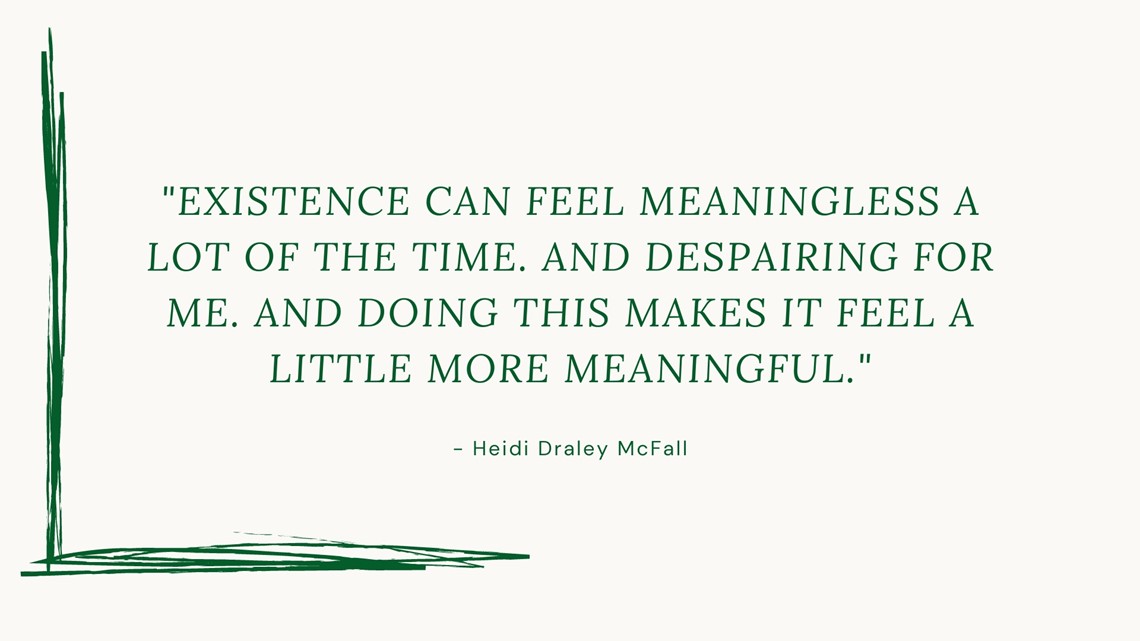
"All of it just seemed so romantic and so magical," she recalled. "The big moments, the highs, the lows -- I have this urgent need to somehow document it. Some kind of an authentic moment of that person's life and existence is just sort of captured and frozen and then you're there to just sort of experience it."
At the heart of Heidi's work is a thread of the quiet within the noise. A heartbeat of intimacy that tries to find validation within chaos. She strives to keep authenticity as the foundation for all of her pieces.
"Making these pictures is like a way of trying to cut through the noise and solidify something that matters more than anything, which is our relationships and the revelry that we can take in these small, intimate moments," she says. "Existence can feel meaningless a lot of the time. And despairing for me. And doing this makes it feel a little more meaningful."
But despite all her success, Heidi couldn't help but notice a nagging feeling that there was supposed to be more to her work. A deeper meaning of some sort -- perhaps even a deeper connection.
It led to years of searching that continued even after she was burnt out of the New York City art scene. She felt disconnected from her love for her work, run down after years of seemingly doing what she 'needed' to be 'successful.'
"Around 2010 to 2013, those were years of real floundering," she remembers.
Putting The Pieces Together
It was around this time that Heidi began experimenting with film photography. It was how she had begun her photography, drawing journey, but as digital cameras took hold, she had also shifted to their new technology.
Now turning back to film, Heidi fell in love with its authenticity and rawness; its inability to be edited, changed or distorted.
Eventually she enrolled in a darkroom photography class at a local community college. For weeks she soaked up every drop of knowledge -- how each tiny calculation could lead to different results in the projected photographs.
"Immediately I knew this could be a massive game changer," Heidi said. "It was like this very abstract space where anything could happen."
There's an odd parallel between Heidi's work and the process in a darkroom.
As a image is going from a roll of film to be printed into a photograph, it must go through an enlarger. This projects the picture down onto a piece of paper which then becomes the photo.

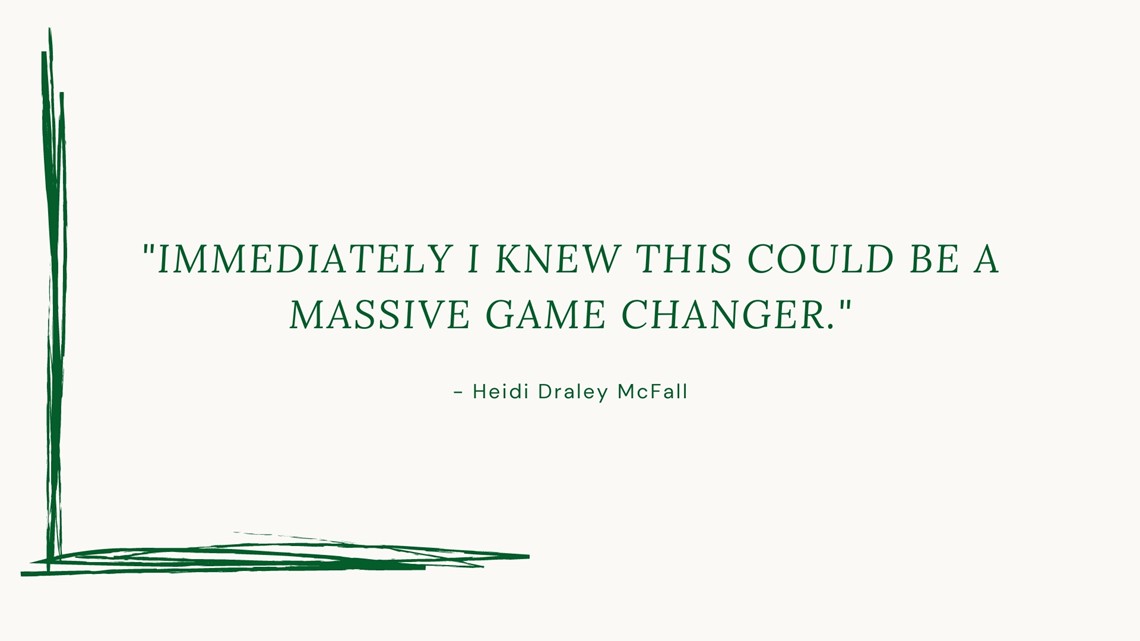
It's extremely similar to the way Heidi takes a smaller photograph, then blows it up to a much larger scale through her drawings, projecting it onto her medium of choice.
Connecting those dots for the first time was an experience Heidi says she'll never forget.
"Once I started the dark room process, everything about my history and my likes and my tastes-- everything started to come into very clear view," she remembers. "It was spiritual almost. Otherworldly, for sure."
To Heidi, it made 'perfect sense' why she was gravitated toward the high drama, the contrast, the angles of the black and white film photographs. It was at this point that she felt the puzzle pieces starting to slot into place.
A Resin Realization
A few years had gone by and Heidi still felt the nagging urge that there was another step she could take with her art. But finding that step was proving to be a challenge.
Back in 2003 she was visiting a friend in Texas when she began admiring his epoxy wooden countertop. It was covered in resin to protect the wood underneath.
Fast forward nearly 15 years and Heidi needed a new countertop for her studio. Remembering her friend's resin and wood creation, she decided it would be perfect for her space.

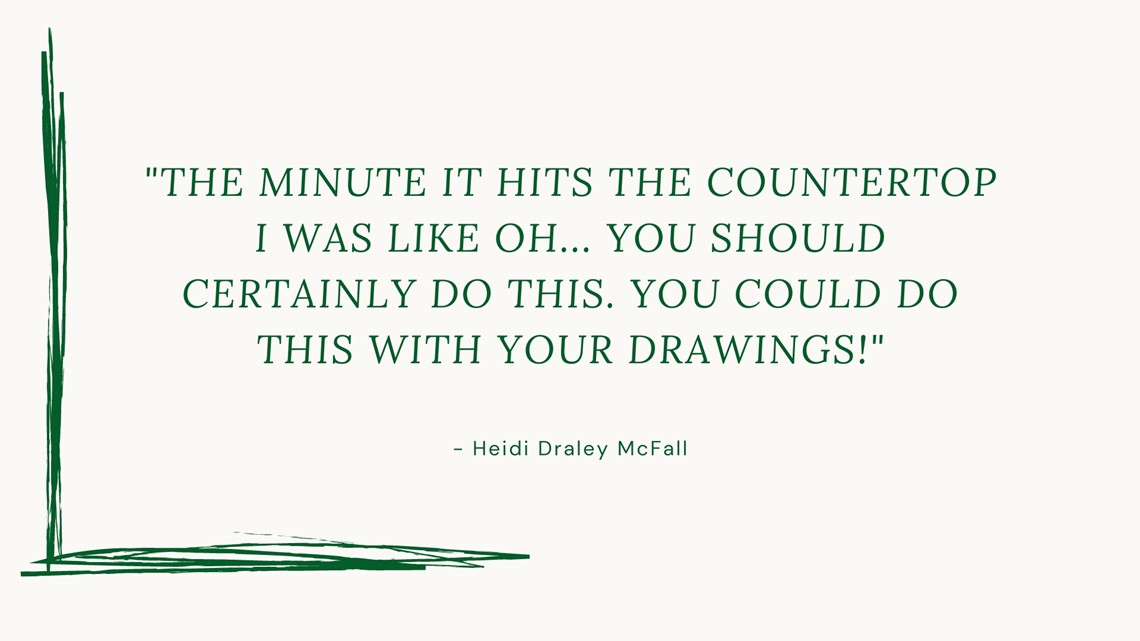
"So I pour the resin and the minute it hits the countertop I was like oh... you should certainly do this. You could do this with your drawings! Absolutely! Why not?! You, you need to-- you should," Heidi said.
And after consulting several friends, family members and mentors, she did it.
The first drawing she tried turned out well. So well, Heidi was intrigued of the possibilities. Thus began three more years of figuring out where else she could go with this resin procedure.
"And then one day I was sitting in my studio and I picked up a piece of darkroom paper," Heidi recalled. It was the same paper she used to project her film photos into tangible images. "On the side of the box, it's called RC paper. It's called resin coated paper!"
To Heidi, it felt like another mandate to continue her trials and errors and weddings of all her different materials.
Creating Her Own Technique
Finally, the missing puzzle piece seemed to appear. What if she could manipulate the surface of the resin as well? What on earth would that mean for her photos?
As Heidi tells the story, she noticed she had been putting wax paper under the perimeter of her drawings since the resin wouldn't stick to it. On a whim, she peeled a piece of wax paper away from top and noticed the impression of the paper had adhered itself perfectly to her drawing.
The result was that of an old photograph that had been worn down from decades of love. A sort of texture that looked 3-D but was nearly smooth to the touch.
"And I found the mark to be stunning. Stunningly beautiful," Heidi said. "And I thought, well, what if you could make the front of the picture just look like a giant piece of wax paper? How odd and how interesting for the viewer!"
From that point on, it was experiment after experiment. Wax paper, tarps, shower curtains, shrink wrap, anything and everything she could find at the local hardware store that wouldn't stick to the resin.
"I believe it's called like a eureka moment," Heidi smiled.
All of that work brings us up to present day.
Today, Heidi creates her pieces by first taking photographs of her subjects on her film camera. The images are all processed in a dark room and then put into overflowing boxes in her studio. When inspiration needs to hit, you can find Heidi sitting on a well-loved green couch, rifling through photographs.
Her studio is on her family farm, several miles outside of DeWitt. It's surrounded by trees, flowers and the endless chirping from neighboring birds. A quiet, peaceful and lonely existence in rural Iowa that has forced Heidi to confront her biggest artistic challenges and triumphs.
Once a photograph speaks to her, Heidi draws grid lines over it and then begins replicating the image with black and white pastels, paint and airbrushing.

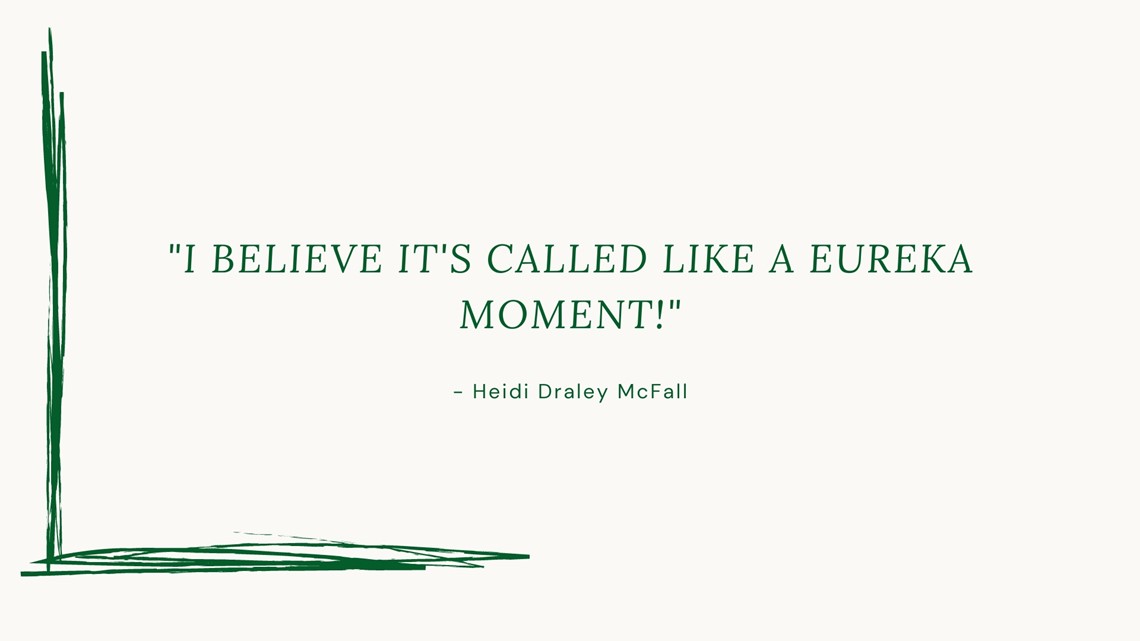
A completed image is then covered in a layer of resin which is left to cure. That is then sanded down before more resin in applied, followed by a shower curtain (or tarp or wax paper or whatever material is needed in that moment). Once the second coat of resin is dry, she peels away the outer layer of material to reveal what's left underneath.
Throughout the pandemic, Heidi began to notice her new process take on an even deeper meaning and metaphor.
"The work was sort of like mirroring these barriers or coverings -- the masks, the plastic barriers. They were everywhere! And the work is essentially plastic barriers that I'm putting up," she noted. "That cruel serendipity was deadly and profound."
News 8 was fortunate enough to be present on a day Heidi was peeling a shower curtain back from her latest art piece. A drawing of two sisters, seemingly caught in a moment of dual reflection.
As she transferred her work over to the wall, carefully drilling the leftover resin into the side of her studio with screws a power tool, Heidi warned us that she never knows how these pieces are going to turn out.
"We'll see if it works," she joked. "It might not!"
Finally, with all of our cameras in place and our breath bated, Heidi pulled back a carefully folded and rumpled curtain to reveal the sisters underneath.
What was left behind, it turns out, was a beautiful illusion.
Like an old film photo that had been folded up and stuffed in a wallet, or a box in the attic for decades, the piece had a faded and timeless quality. The curtain had placed 3-D folds both horizontally and vertically, despite being smooth to the touch.
We asked Heidi if she felt this piece was a success and she smiled, not turning away from her art.
"I wanted to harness... something. And I think I did do that. So I guess... yes," she laughed.
Finding The Joy
Now, several years into her trailblazing process as a pastel and resin artist, Heidi says she's reimagining what success looks like, as she finds real joy in her new technique.
"You just dig deep, deep, deep down within yourself for the most important thing that you're trying to excavate out of your practice of your artwork and then within yourself, and you bring it all together," she said.
While success was once solo shows in New York City, art sales and peer recognition, today she views the word a little differently.
"Now, for me, success means finding real purpose through my materials and process," Heidi said. "I found joy. Because I think that's where the real joy is. And I think that's where the real, true success comes from. Finding something innovative within yourself that can drive you forward."
She says regardless of if one ever feels 'satisfied,' she believes one only needs to keep pushing forward. To keep searching and excavating for meaning.
"My art dealer always used to say all the answers are in the work. And it's true," Heidi said. "They're all there. You just have to go and find them."

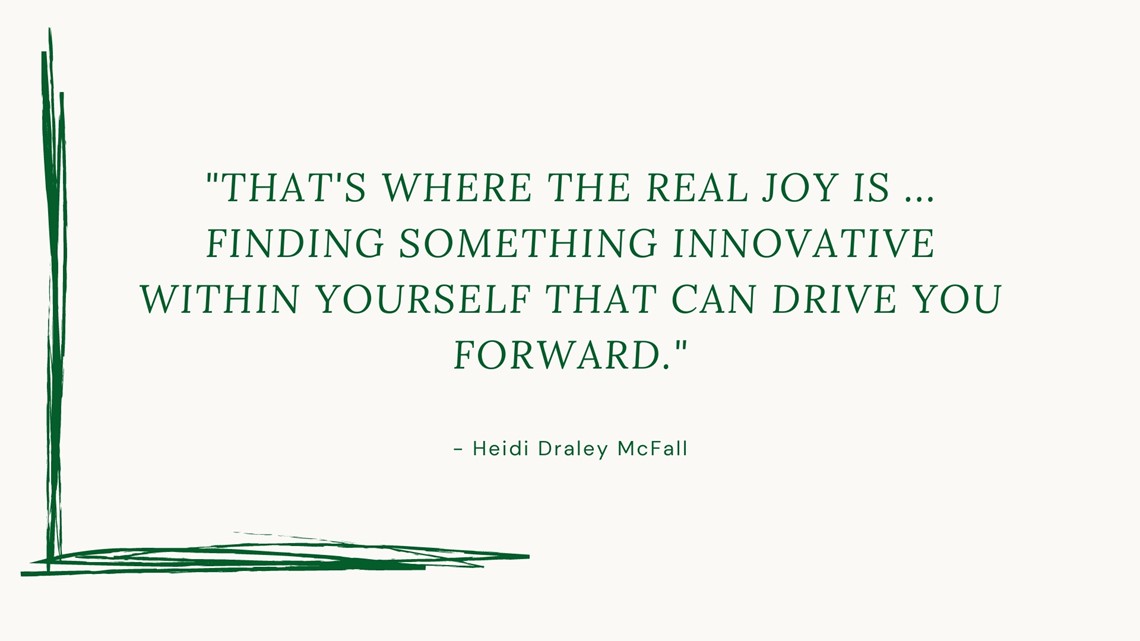
Watch more news, weather and sports on News 8's YouTube channel

